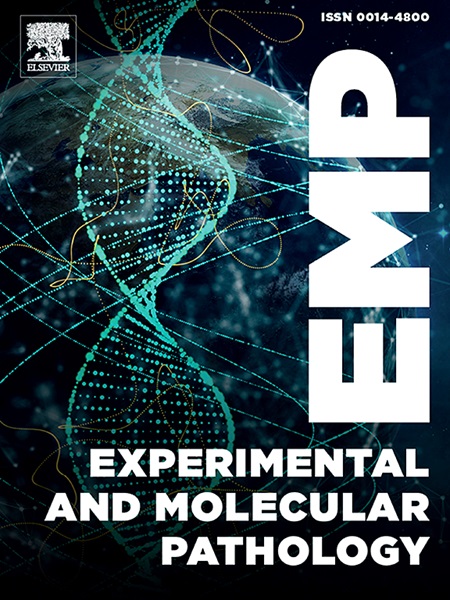Role of A1 adenosine receptor in cardiovascular diseases: Bridging molecular mechanisms with therapeutic opportunities
IF 3.7
4区 医学
Q2 PATHOLOGY
引用次数: 0
Abstract
Adenosine serves as a critical homeostatic regulator, exerting influence over physiological and pathological conditions in the cardiovascular system. During cellular stress, increased extracellular adenosine levels have been implicated in conferring cardioprotective effects through the activation of adenosine receptors with the A1 adenosine receptor subtype showing the highest expression in the heart. A1 adenosine receptor stimulation inhibits adenylyl cyclase activity via heterotrimeric Gi proteins, leading to the activation of distinct downstream effectors involved in cardiovascular homeostasis. While the comprehensive characterization of the pharmacological functions and intracellular signaling pathways associated with the A1 adenosine receptor subtype is still ongoing, this receptor is widely recognized as a crucial pharmacological target for the treatment of various states of cardiovascular diseases (CVDs). In this review, we focus on elucidating signal transduction of A1 adenosine receptor, particularly Gi protein-dependent and -independent pathways, and their relevance to cardiovascular protective effects as well as pathological consequences during cellular and tissue stresses in the cardiovascular system. Additionally, we provide comprehensive updates and detailed insights into a range of A1 adenosine receptor agonists and antagonists, detailing their development and evaluation through preclinical and clinical studies with a specific focus on their potential for the management of CVDs, especially heart diseases.

A1腺苷受体在心血管疾病中的作用:连接分子机制与治疗机会
腺苷是一种重要的体内平衡调节剂,对心血管系统的生理和病理状况产生影响。在细胞应激过程中,增加的细胞外腺苷水平与通过激活腺苷受体而赋予心脏保护作用有关,其中A1腺苷受体亚型在心脏中表达最高。A1腺苷受体刺激通过异三聚体Gi蛋白抑制腺苷酸环化酶活性,导致参与心血管稳态的不同下游效应物的激活。虽然与A1腺苷受体亚型相关的药理学功能和细胞内信号通路的全面表征仍在进行中,但该受体被广泛认为是治疗各种心血管疾病(cvd)状态的关键药理学靶点。在这篇综述中,我们重点阐述了A1腺苷受体的信号转导,特别是Gi蛋白依赖和独立的信号转导途径,以及它们在心血管系统细胞和组织应激过程中与心血管保护作用和病理后果的相关性。此外,我们还提供一系列A1腺苷受体激动剂和拮抗剂的全面更新和详细见解,详细介绍了它们通过临床前和临床研究的开发和评估,特别关注它们在心血管疾病(特别是心脏病)管理方面的潜力。
本文章由计算机程序翻译,如有差异,请以英文原文为准。
求助全文
约1分钟内获得全文
求助全文
来源期刊
CiteScore
8.90
自引率
0.00%
发文量
78
审稿时长
11.5 weeks
期刊介绍:
Under new editorial leadership, Experimental and Molecular Pathology presents original articles on disease processes in relation to structural and biochemical alterations in mammalian tissues and fluids and on the application of newer techniques of molecular biology to problems of pathology in humans and other animals. The journal also publishes selected interpretive synthesis reviews by bench level investigators working at the "cutting edge" of contemporary research in pathology. In addition, special thematic issues present original research reports that unravel some of Nature''s most jealously guarded secrets on the pathologic basis of disease.
Research Areas include: Stem cells; Neoangiogenesis; Molecular diagnostics; Polymerase chain reaction; In situ hybridization; DNA sequencing; Cell receptors; Carcinogenesis; Pathobiology of neoplasia; Complex infectious diseases; Transplantation; Cytokines; Flow cytomeric analysis; Inflammation; Cellular injury; Immunology and hypersensitivity; Athersclerosis.

 求助内容:
求助内容: 应助结果提醒方式:
应助结果提醒方式:


